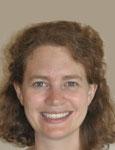A clock hangs in a great Northwoods lodge, but it has no hands. The sign below says, “Here there is no time.” This clock symbolizes Marnie Mamminga’s memories of spending every summer for over sixty years at her family’s cabin on Big Spider Lake, near Hayward, Wisconsin. In Return to Wake Robin, Mamminga invites us to travel back with her as she vividly recounts what it was like to go “Up North” every summer.
 Born and raised in the Chicago area, Mamminga is a writer whose publishing credits include the Chicago Tribune, Reader’s Digest, the Christian Science Monitor, and several Chicken Soup for the Soul books. In her new memoir, Return to Wake Robin, Mamminga traces her family’s love affair with the Northwoods back to the early 1920s when her grandparents, Erle and Clara, escaped the hot, dusty cornfields of Aurora, Illinois, and drove 450 miles north to vacation in Hayward. Erle and Clara eventually discovered Moody’s Camp and fell in love with the elegant dinners in the lodge, the weekly square dances, the swimming and fishing, and the clean, crisp air.
Born and raised in the Chicago area, Mamminga is a writer whose publishing credits include the Chicago Tribune, Reader’s Digest, the Christian Science Monitor, and several Chicken Soup for the Soul books. In her new memoir, Return to Wake Robin, Mamminga traces her family’s love affair with the Northwoods back to the early 1920s when her grandparents, Erle and Clara, escaped the hot, dusty cornfields of Aurora, Illinois, and drove 450 miles north to vacation in Hayward. Erle and Clara eventually discovered Moody’s Camp and fell in love with the elegant dinners in the lodge, the weekly square dances, the swimming and fishing, and the clean, crisp air.
When an opportunity to build a cabin next to Moody’s Camp came up, Erle and Clara jumped at the chance. It was the perfect situation, as they could relax in their own cabin while still enjoying all the amenities offered by the Camp. Clara named their new cabin Wake Robin after the white wildflowers that covered the ground. She and Erle found peace and simplicity there. Together with their son, David (Mamminga’s father), they began a family tradition of spending every summer at the cabin—a tradition that continues four generations later.
Filled with personal photographs, Mamminga’s book brings the charm of a bygone era back to life. She describes the cabin’s green dock as the main gathering place where she and her family spent time with friends and sunbathed, chatted, swam, and fished. One photo shows a young Mamminga executing a perfect flying cannonball off the dock’s edge. And the fun wasn’t reserved only for sunny days. When it rained, Mamminga and her siblings plucked painted turtles from the woods and held turtle races inside the cabin.
The author also writes affectionately about the lifelong friendships her family developed with the camp’s first owners, Ted and Myrtle Moody, and its second owners, Dick and Lucile Seitz. Her portrayals of Camp Moodu’s fishing guides, all strong and dependable men who spent hours rowing clients around the lake in hopes of catching a big musky or walleye, further enhance the aura of the place.
Her family’s annual pilgrimage to Wake Robin also serves as the backdrop for Mamminga’s own coming-of-age story. She writes of how, as a seven-year-old, she vacationed at the cabin with her grandmother and had the privilege of dining at Moody’s elegant lodge. Mamminga loved the white tablecloths and wildflower centerpieces on the tables. Every year, she celebrated her August birthday at the cabin, including her sweet sixteenth when she and her friends jumped on the green dock with such vigor that it went sliding into the lake. Also, as a teenager, Mamminga used to be roused from a deep sleep by her mother so she could watch the sunrise over Big Spider Lake. Years later, Mamminga would awaken her own sons to join her for the 5:00 am ritual. Now she is introducing her grandchildren to the magic of the cabin and Big Spider Lake.
Summers at Wake Robin also served as a kind of refuge for Mamminga as her family weathered more difficult times. She writes poignantly about her father’s struggles, his untimely death, and the way both her parents sacrificed to keep the cabin in the family. Mamminga also sadly describes the changes that began in the 1970s when the summer resorts, cozy family cottages, and weekly square dances gave way to “modernized lake homes, condo associations, and Jet Skis.” Now Wake Robin stands as one of the last log cabins of its kind on Big Spider Lake.
At its heart, Return to Wake Robin is about creating and keeping family rituals, enjoying simple pleasures, and reveling in nature. For those who long to escape our fast-paced world and go back to a simpler time and place where all anyone needed were “the basics and a boat,” Mamminga’s book will take you there and make you wish your family had gone “Up North” every summer, too.




